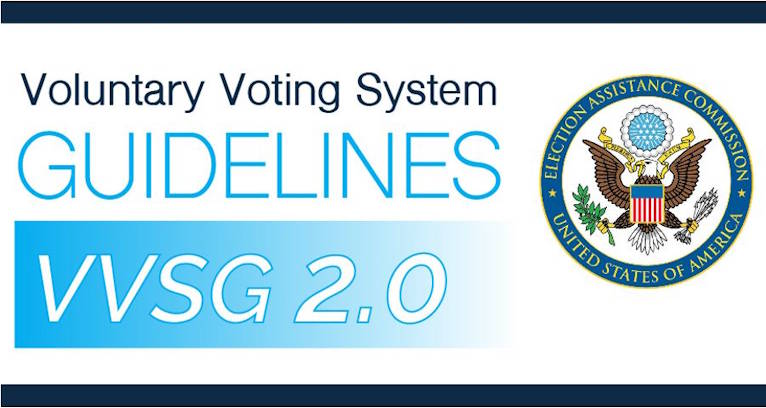
Election Integrity
By Brent Regan
Conducting honest and fair elections is a cornerstone to our Republican form of government. However only 69% of adults are confident their votes would be counted accurately. Nearly a third of Americans are not confident in our election systems. Why?
Elections are conducted by the states where the actual process of voting is typically managed by the county clerks under state law. This leads to a wide range of election laws and procedures. This lack of standardization leads to confusion and that leads to mistrust. Most voters want clear and consistent voting laws including uniform rules for voter ID, mail-in ballots, and deadlines.
On January 2nd of 2020 I had the privilege of chairing the Citizens Committee for Election Integrity. The purpose of this committee was to concisely articulate the minimum standards for free, fair, and honest elections. These standards could then be used by our local, state and federal legislators as a metric for reviewing and revising election law to ensure free, fair, and honest elections where the outcome is accepted by all citizens of good will. The committee of 28 Idaho citizens unanimously adopted 15 standards. A copy is available at KCRCC.com under the “Information” tab.
There are standards for transparency, auditability, chain of custody, observers, equal standards for all voting types, voter identification, signature verification, ballot form, ballot anti-counterfeiting measures, ballot tracking, ballot tabulation, ballot reconciliation, qualified elector lists, stability of election laws, preservation of election records, and provisional ballots. We are fortunate in Idaho as our election laws meet many of these standards with some of those laws, government issued photo ID requirement for example, have been passed in recent sessions.
Nationally, the Voluntary Voting Systems Guidelines (VVSG) provide standards for voting and tabulating equipment. Since 2020 the VVSG have been revised to 2.0 and adopted by the U.S. Election Assistance Commission (EAC) in February of 2023. The revised standards emphasize security and auditability. Many of the Citizens Committee for Election Integrity standards are reflected in VVSG 2.0.
Paper ballots and hand counting have been the gold standard for voting and tabulation. However, hand counting does not scale well. Hand counting is practical for simple ballots or elections with a small number of ballots but large elections with complex, multi-issue ballots present a huge logistics problem.
Imagine there are 20 issues on the ballot so that each ballot takes two minutes for four people to tabulate (2 counters and 2 observer). In our county we cast 97,911 ballots in the presidential election at 74 precincts. That is over 1,300 ballots to count which would take four people 44 hours or 40 people about 5 hours, at each precinct. To conduct the election, you would need about 3,000 volunteers in addition to the 500 currently working the polls. Imagine finding, training and equipping all those people for every election. Now imagine all the mistakes that would be made.
This is why the committee agreed that having two independent systems, one at the precinct and one at the central office, to tabulate the ballots would be the most practical solution because it would be highly unlikely you could tamper with two independent systems and get the same result.
The optimal voting process would start with the voter presenting their government issued photo ID and signing a poll book to be issued a paper ballot. That ballot would have security measures to prevent counterfeiting and a unique identifier, not tied to the voter, so that the ballot could only be counted once. The voter would mark the ballot and then place it in the precinct ballot tabulator. The tabulator would scan the ballot and alert the voter if there were any issues with the ballot such as an over vote (marking two candidates in the same race) or an under vote (no candidates marked). The voter would have the option of casting the ballot or retrieving it to mark or exchange for a fresh ballot to mark.
Because the ballots are scanned at the precinct with the voter present and any issues are identified the voter has the option of correcting any problems and the need to later adjudicate ballots is greatly diminished. The unique ballot identifier ensures that ballots cannot be scanned more than once or photocopied. However, the unique identifier cannot be traced back to a particular voter, protecting the privacy of the vote.
After the polls close the tabulation results and the physical ballots in security sealed boxes would be delivered to the elections office. The precinct counts would be compiled and announced as the preliminary results that night. The ballots could then be counted again at the elections office using a different system and the results would be compared to the precinct count. Any discrepancy would be investigated. The voter would have a high level of confidence their vote was accurately counted.
Currently, in our county all the Election Day ballots are delivered to the elections office for tabulation. Recounts are done with the same equipment. County wide results can take 6 hours to report.
Our County Clerk is considering updating our election equipment to VVSG 2.0 which would include precinct tabulators, central office scanners, the ability to have unique ballot identifiers, Print On Demand ballots with anti-counterfeiting features, and 100% “Air Gapped” tabulators with NO internet or network connectivity (per Idaho code). The current central counting equipment has been in use for nearly 20 years.
Procuring new high security central office ballot scanners and outfitting 74 precincts with ballot printers and tabulators isn’t cheap, but fortunately, due to good management, there are funds available for this one-time expense so no tax levy is needed. It is still our tax dollars, so what is the one-time cost to each voter? About $18. That seems a good value for the peace of mind in knowing our elections meet the highest standards for integrity.
It’s just common sense.